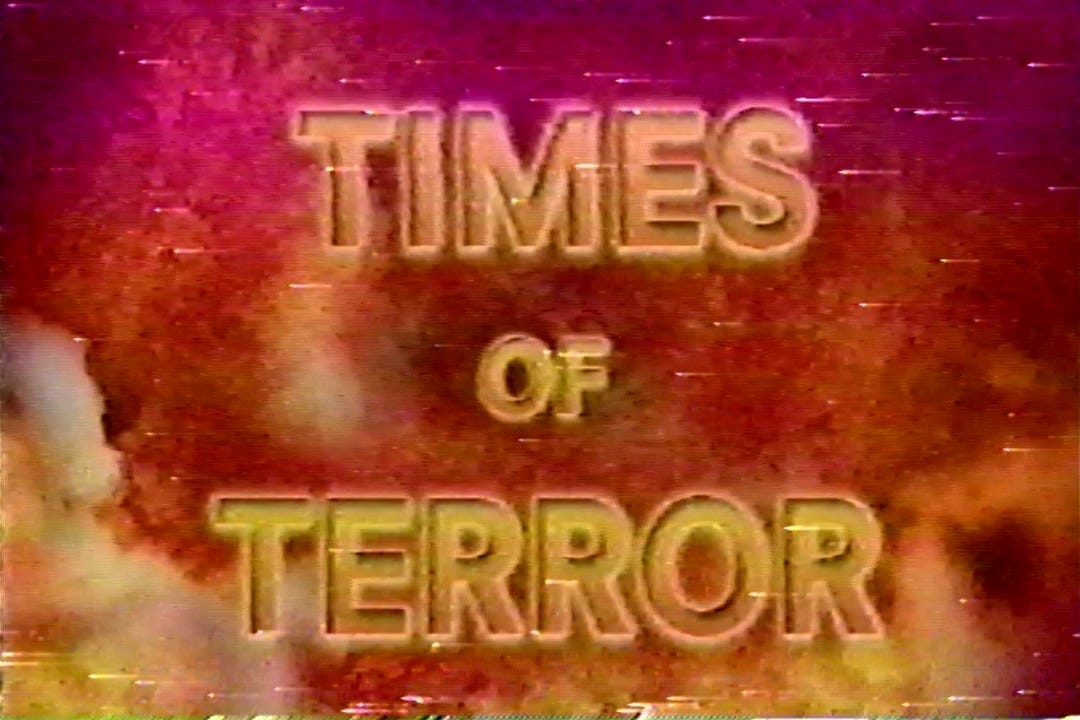The Following Film Has Been Modified From Its Original Version
a three-part adventure on the high seas
It’s been a little while since I made a themed lost media post, so for your viewing pleasure this evening, I’ve got ocean themed edutainment. First up is a two part series on the kinds of animals that dwell in the sea. The first hour is about the mammals that have made the ocean their home, and the second is about the kinds of predators found in the depths.
These reminded me of the tiny theatre room at the aquarium closest to me where they would play very similar documentaries about all kinds of sea-animals. Both parts, despite the second half being about predators, are very calming and chill watches. This is the kind of stuff I love watching on a lazy weekend afternoon or right before bed late on a weeknight.
The third part is not very chill at all. It’s a nearly hour long series of vignettes depicting some of the worst disasters that have ever taken place on the water. From natural disasters to human error turned tragic, there’s a little of everything here and it’s all scary.
As with many of these kinds of tapes, this one was recorded in EP mode. For those unfamiliar, there are multiple modes for recording video to tape, and essentially each mode runs the tape containing the video data across the heads which read that data at different speeds. The faster the tape moves, the more data is being read, so the picture quality looks better. The slower the tape moves, the less data is being fed to the heads, and thus the image quality, tracking, audio, stability suffers.
This last tape was recorded in EP mode which is one-third the speed of SP or standard play. Commercial tapes recorded in EP (extended play) or LP (long play or half speed) are done so to save on the cost of the tape itself. The slower the tape is fed through the VCR, the less tape physical tape is needed to be spooled into the video cassette.
For home applications, this has many uses. Being able to record 4 or up to 6 hours on a standard blank 2 hour tape can be really useful. Maybe there’s a marathon on TV you didn’t want to miss or you’d like to back up several tapes worth of home movies onto one tape. The quality takes a hit in both LP and EP modes, but it’s better than having nothing!
Unfortunately, when commercial tapes are recorded in EP mode, it just means they were cheaping out. This was a corner they probably shouldn’t have cut, but they did and here we are with a static-y video with very poor sound quality. As far as I can tell, I’ve never found any sort of indication that these tapes were recorded in lower quality on the packaging anywhere; however, as long as the tapes are no longer sealed, it’s pretty obvious when tapes have been recorded in these lower quality formats, as there’s practically hardly any tape on the spools in the cassette.
If the runtime is an hour long, a quality tape will take up just over half the space in the clear window from the spool to the outside edge, while a tape recorded in EP mode will have 2/3rds less on the spools. The other effect this has is that a tape with a runtime of an hour and recorded in EP mode feels impossibly light. Most of the weight in a video cassette comes from how much tape is on the spools.
Anyways, I’ve still got a backlog of about 10-12 tapes, and I’m always out looking for more. I had a blast putting together this themed post, and I hope you enjoy the educational entertainment I’ve curated here.
Roll the tapes!
Life in the Sea Volume One: Great Sea Mammals
1995 | Runtime 60 minutes
Explore the startling mysteries of the sea.
orca-killer whale, right whale, pilot whale, humpback whale, bottlenose dolphins, spinner dolphins, manatees, sea lions
Discover the vast underwater world as you've never seen it before. Learn how the oceans were formed and why the sea is blue. Witness the fascinating phenomenon of the underwater food chain at work. Enjoy the exquisite beauty and playful intelligence of the dolphin with its complex language and amazing communication skills. Marvel at the magnificence of the whale, the world's oldest mammal, which has made the ocean its playpen. Meet the monarch of the sea, orca, the killer whale, who reigns supreme. Discover the gory secrets of the fiercest water mammals as they hunt for prey. Learn to identify many of the hundreds of species of fish, including the colorful angelfish, the tang, the harlequin bass, the dour lizard fish, and the funny-looking longsnout seahorse. From the smallest microscopic organism to the largest ravenous predator, uncover the mysteries of Life in the Sea.
Life in the Sea Volume Two: Great Sea Predators
1995 | Runtime 60 minutes
An extraordinary voyage of underwater discovery!
great white sharks, hammerhead sharks, mako sharks, barracudas, manta rays, giant octopus, stingrays
Go face-to-face with the terror of the shark. Witness a variety of species from the hammerhead to the jet-fighter shape of the mako shark, and the sleek, fearful terror of the great white. Learn how a boneless skeleton and unique reproductive behavior separate the shark from other fish. Discover why some fish life in disguise and how that can mean the difference between life and death. See the blue shark use countershading to creep up on prey without being noticed. Experience the camouflaging tactics of dangerous fish who change color routinely. Understand what can thrive and what can perish within the stinging tentacles of the sea anemone. Witness the deadly skill of the octopus as it strangles its prey. Separate fact from fiction in this real-life adventure into Life in the Sea.
Times of Terror Presents: Disasters at Sea
1999 | Runtime 50 minutes
Real Video / Real Terror
Set sail on a wide-eyed adventure to the bottom of the ocean to unlock the secrets behind some of the world's most notorious disasters at sea.
This rare collection of lost film footage, computer graphics, interviews with survivors and archival photos sheds new light on the unbelievable catastrophic events that lead to the ultimate destruction of The Titanic, The Lusitania, The Birkenhead, The Morro Castle, The Andrea Doria, The Bismarck, and The Herald of Free Enterprise. As well as shedding new light on other disasters at sea caused by the Terror of Kamikaze, Pearl Harbor, Battle of the Midway, Exxon Valdez, and much more!
Shhhhhh…
Lastly, just as a secret little bonus, here’s one of my newest beats! I’m getting ready to release another big instrumental tape on my Bandcamp very soon, and I’ve been getting back into the swing of things. I hope you like it!
If you’d like to check out my other archival work, please check out my Youtube playlists for video and audio archives.
Thanks so much for checking out this week’s edition of Diptych. As always, if you have any questions or comments you can get at me here or here or leave a comment below this post. If you haven’t subscribed to this newsletter yet (it’s free) please think about doing so.
See you soon.
—Forrest














We watched the first two on the TV cart one day in grade school. I remember the cover! There's at least 4 parts to that series one of the others is about bioluminescent deep sea dwellers. Maybe you'll find those too one day!